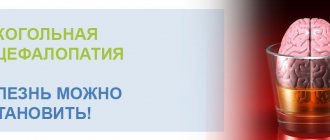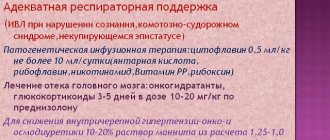The importance of the higher parts of the nervous system in the reactivity of the body
As the body and its nervous system develop, reactivity or sensitivity to a number of toxic substances increases and defense reactions change. For example, a lizard tolerates doses of diphtheria toxin well, which are sufficient to kill several hundred mice. Similar results were also obtained in ontogenesis. In particular, the peculiarity of reactivity in infants, especially the tendency to digestive and metabolic disorders, depends on the insufficient functional maturity of the cerebral hemispheres. Despite the occurrence of exceptions, these data allow us to recognize the great importance of the higher parts of the nervous system in the reactivity of the body. It has also been established that in hibernating animals during hibernation, due to prolonged inhibition of the central nervous system, reactions to the influence of any harmful agents, such as inflammatory or infectious agents, sharply decrease. The reactivity of decerebrate animals to various stimuli, such as alcohol, morphine, and thyroxine, is noticeably changed. Decerebrate animals are less resistant to infection.
Reactivity also changes in cases where animals are exposed to prolonged deep sleep or anesthesia, which, as is known, primarily affects the higher parts of the central nervous system. In such animals, the reaction to the action of protein, various toxic substances, excessively high or low temperature, and hypoxia changes noticeably (V.S. Galkin).
Clinical observations have also shown that due to excitation and inhibition in the cerebral cortex, the course of the disease changes significantly. Thus, in cases where inhibitory processes predominate in the cerebral cortex, reactivity to the action of stimuli is noticeably weakened.
The study of conditioned reflexes has created new and very broad opportunities for studying the functions of the brain and the importance of higher nervous activity in the reactivity of the body, in balancing it with the environment.
The study of the patterns of higher nervous activity has opened up prospects for resolving questions about the mechanisms of the occurrence of diseases and pathological processes.
Studies of conditioned reflexes and types of higher nervous activity have established the pathogenetic significance of complex patterns of cortical activity
(phenomena of induction, concentration and irradiation of excitation and inhibition, as well as processes of protective inhibition) in violations of the reactivity and adaptation of the organism to existence in the environment. For example, weakening of the function of the cerebral cortex (with experimental neuroses, severe trauma and overstrain of the nervous system) causes a disturbance in reactivity, in which weak and strong stimuli have the same effect, or a weak stimulus begins to act as a strong one and, conversely, a negative stimulus acts like a positive one, and positive gives a weakened or zero effect.
The importance of functional typological features of higher nervous activity for determining reactivity is evident from the fact that the state of higher nervous activity is an important factor in increasing or decreasing the body’s resistance to the action of any irritants, including pathogenic ones. In this regard, it should be noted the influence of mental trauma, difficult experiences on the occurrence and course of diseases, for example, carbohydrate metabolism disorders, dysfunction of the thyroid gland (Graves' disease), changes in the function of the gastrointestinal tract, persistent increase in blood pressure (hypertension).
The importance of the nervous system in the reactivity of the body also follows from studies of the nature of excitation and inhibition. N. E. Vvedensky was the first to discover the depressing effect on the nervous system of stimuli of great strength and frequency, the so-called pessimum of irritation. , a qualitatively different form of flow and transmission of the excitation wave occurs
. In a state of developing parabiosis, the reaction of the nerve to the action of the stimulus changes.
The doctrine of parabiosis shows the meaning of the initial functional state
, functional mobility, or lability of the central and peripheral nervous system (to a lesser extent of any other living substrate) in the emergence of qualitatively different forms of transmission of excitation waves.
Any stimulus, regardless of its characteristics, under certain conditions of change in the functional mobility of the nervous system, can have a phasic effect on its excitability, i.e., first reduce excitability (electropositive depression of nervous functions), and then increase it (period of oscillations of the electrical potential) and again sharply, long-term suppression - electronegative, ever-increasing depression of nervous functions (Fig. 8).
Rice. 8. Fluctuations in the potential of the parabiotic site. The drug is the sciatic nerve of a frog. Prd is the prodromic (electropositive) phase of parabiosis. This is followed by a transitional phase of parabiotic current oscillations. Finally, the electronegative phase of parabiosis begins. When the negative potential of the parabiotic area reaches a critical level (K-K), a complete cessation of conductivity and excitability of the Pb area occurs (according to N. E. Vvedensky)
The transition from the active state of the nerve to the parabiotic one is accompanied by the emergence of successively several intermediate phases that determine the response: 1) provisional, or equalizing, when both strong and weak stimuli cause the same effect; 2) paradoxical, when weak stimuli give a greater effect than strong ones; 3) inhibitory, when weak and strong stimuli cease to cause a response. Restoring function sequentially goes through all phases, only in reverse order.
Studies of the lability of nerve formations are of fundamental importance for understanding reactivity, since they show that the same stimulus strength, depending on the reactive properties of the nervous system, can cause different reactions from the body
.
Parabiotic phenomena, a decrease in excitability and a decrease in the lability of nerve centers have been found in the development of some pathological processes, for example, traumatic shock, which is based on overexcitation of the central nervous system with its subsequent inhibition, as well as anaphylaxis or allergic phenomena, which will be discussed below. Changes in the lability of the nervous system have also been established in other diseases, for example, tetanus, rabies, and some poisonings with chemical agents.
Among other changes in the activity of the central nervous system, on which the state of the body's reactivity depends, the role of the dominant focus and trace reactions should also be noted. A. A. Ukhtomsky showed the dominant importance of the focus of persistent excitation in the direction of reflex reactions.
One of the main experiments showing the importance of the dominant is that in a dog, when the rectum is overfilled, irritation of the cortical centers of the forelimbs does not cause a motor reaction, but leads to rapid bowel movement. The reason for this is as follows: from the intestines, nerve impulses enter the central nervous system, creating a focus of excitation in it. Under these conditions, the process of excitation when irritating the cortical centers of the forelimbs is, as it were, “attracted” to the previously excited, dominant focus and reinforces the excitation process existing here, accelerating bowel movements. At the same time, in other centers of the cortex, in particular in the cortical centers of the forelimbs, the process of inhibition develops. After bowel movement, excitation of the entire cortex is restored again.
The doctrine of the dominant, which is the general principle of the functioning of nerve centers, facilitates understanding of the mechanisms of occurrence of a number of pathological processes. For example, some researchers explain attacks of angina pectoris, a disease based on spasm of the coronary vessels, by the appearance in the cerebral cortex of a pathological dominant focus associated with the coronary vessels. The presence of such a dominant focus causes, as it were, the attraction of extraneous stimuli to it if they reach the cerebral cortex. In such cases, any emotional experience or overstrain of higher nervous activity can become a stimulus for an attack of angina.
In connection with the possibility of the emergence in the central nervous system of a focus of stagnant excitation or a pathological dominant, there are studies that repeatedly indicate the properties of the nervous system to retain a trace of once applied irritation
. Under certain conditions, the excited center continues to play the role of a dominant factor in relation to the work of other centers even after the influx of adequate nerve impulses to it from the original peripheral source has ceased. This phenomenon is characteristic of any living substrate, but in the course of evolution it has become the most characteristic feature of the nervous system.
In a general biological sense, the ability of the central nervous system to retain traces of previous irritations is necessary for the body, as it facilitates the consolidation of properties beneficial to it. However, from exposure to pathogenic agents in the central nervous system, unusual reactions can also occur.
There is an assumption that in some cases, the basis for the occurrence of a relapse of already disappeared pathological processes appears to be trace irritation or the phenomenon of “after-effect”. With repeated exposure to various kinds of stimuli, the resulting nervous excitation, spreading throughout the entire nervous system, is, as it were, attracted to areas that still retain a trace of the former irritation. This finds concrete expression in an altered reaction of the body. Thus, the phenomena of tetanus in a dog, first caused by the action of tetanus toxin on its nervous system, and then eliminated, can arise again if the body is exposed to traumatic effects of factors that are not directly related to the etiology of tetanus (“second blow” according to A. D. Speransky ).
As an example of such reactions, a number of clinical observations can be cited, in particular the resumption of some eczematous changes on the skin as a result of influences that are not directly related to the cause of this disease. This can also explain the resumption, under the influence of mental trauma, of the symptoms of gallstone disease in a patient after surgical removal along with gallstones and after apparent recovery.
Diagnosis of brain meningioma.
Contrast-enhanced magnetic resonance imaging (MRI) is the “gold standard” in the diagnosis of meningioma.
MRI provides the most detailed information. The tumor itself is clearly visible, as well as its relationship to the surrounding brain structures, the degree of damage to the arteries and venous sinuses. This allows you to choose the most optimal surgical treatment tactics.
If MRI is contraindicated, contrast-enhanced CT of the brain is the method of choice. The tumor is visible quite well on CT. The advantage of CT is a better representation of the presence of calcifications and foci of hemorrhage in the tumor, as well as its connection with bone structures. The disadvantage is the toxicity of the contrast. Before the test, you need to check your blood creatinine.
When performed with an MRI or CT scan without contrast enhancement, the brain meningioma is almost the same color as the brain.
Therefore, it can be difficult to diagnose without contrast. Electroencephalography (EEG) is an additional diagnostic method. Indicated when we need to make sure that it is the mass formation that causes epilepsy. Another important diagnostic method is histological examination. But it is done after the tumor is removed. This gives us information about the degree of malignancy and allows us to decide whether radiation therapy and chemotherapy are necessary.







